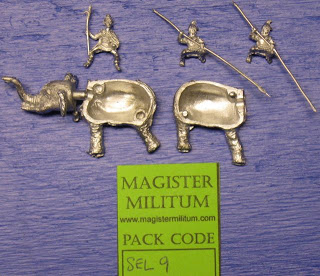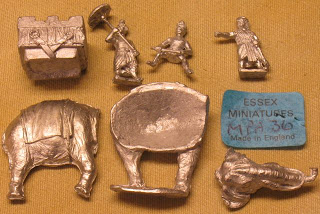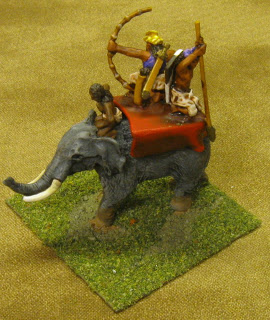 |
| Viking Forge Carthaginian Elephant: MCC-14 |
I did not paint this Viking Forge Carthaginian elephant, but I did add details to the blanket and apply a dip. It’s a part of my Later Carthaginian beater army that I bought at Historicon last year. I’m showing it here as a part of my elephant comparisons.
I have two of these elephants and they have a driver and two crew each. The spears have broken off, they should be taller. The crew are separate figures, but I can’t tell how the elephant itself was cast. The head must be separate, judging by its overhanging ears, but I’m not sure if the body is one or two pieces.
These are by far the largest elephants I have. They’re taller, fatter, and longer than Essex models, and the ears are impressively large. The pose is quite static, but it gives the impression that the beast is so large that it can’t make any sudden, drastic motions.
 |
| Left: Black Hat CA13; Right: Viking Forge MCC-14 |
The sculpting of the elephant itself is excellent, but the crew are pudgy and unimpressive, without a lot of detail. The driver is distinctly KKK-like, and I don’t know what this is intended to represent.
The second picture shows a Black Hat Carthaginian elephant on the left, and Viking Forge on the right. The Black Hat elephant is shorter, but the crew is much taller and thinner. The proportions are completely different.
I would not likely buy any more of these Viking Forge elephants, but only because they’re out of scale with everything else I have, and the crew is pretty terrible.










